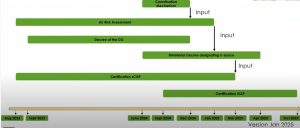By Philip Butterworth-Hayes
If there is anywhere in Europe where the certification of U-space services should be a smooth ride it is Belgium. The port of Antwerp-Bruges has developed a healthy pre-certified U-space eco-system where real-life drone operations are managed daily. It is the home of one of the world’s leading U-space service providers, Unifly, and drone-ready air navigation services providers Skeyes (designated the Single Common Information Service [sCISP] Provider for Belgium in late 2022) and its UTM specialist division SkeyDrone. Complex U-space scenarios have been tested to destruction in the Belgium-Netherlands U-space Reference Design Implementation (BURDI) project, which has trialled a U-space airspace concept able to manage various, dense and complex UAS operations in controlled, uncontrolled environments around the cities of Antwerp, Liège and Brussels. Its aviation regulator the Belgium Civil Aviation Authority (BCAA) has a close working relationship with the European Union Aviation Safety Agency (EASA) via a cooperative agreement through which both sides discuss the interpretation of the EU U-space regulation.
And yet, more than two years after the original U-space regulation became law, the BCAA, as with other national aviation regulators, is still struggling to implement U-space airspace rules which will allow European drone operators to realise the commercial potential of their investments.
While it has been common knowledge for some time now that implementing U-space airspace regulations in Europe is more complex and time-consuming than originally thought, the devil-in-the details of implementation – and realistic timescales for launch – are at last becoming clearer. U-space operations are likely start in October 2025 at the earliest in Belgium.
A glimpse of the final challenges facing the EU’s national regulators see (The regulatory challenge to implementing U-space in Belgium) in implementing U-space airspace was given by the BCAA’s Michel Van Opstall, speaking at the European Network of U-space Stakeholders Meeting in Brussels at the end of January.
The BCAA has four major work programmes in implementing the regulation in the port of Antwerp and Bruges: formulating a scalable airspace risk assessment, developing a coordination mechanism to each stakeholder to raise concerns and identify priorities, certifying the Single Common Information Service Provider (sCISP) and certifying the U-Space Service Provider USSP).
The airspace risk assessment, involving inputs from all stakeholders, began in August 2023 and the BCAA is now in the final stages of developing a compliance matrix in line with the U-space regulation, which will allow for future drone operations in the port. The legal framework implementing the Commission’s Implementing Regulation on U-space (https://mobilit.belgium.be/nl/regulation/coorindatiemechisme-u-space) has a target date of publishing in April 2025.
It is the work to certify the sCISP and U-space service provider that is proving the most challenging currently.

Both require a review of detailed documents and site visits to validate the operating performance of the technology. The BCAA is currently in the final stages of reviewing the sCISP certification documents with a site visit due in the next few weeks. The USSP certification is taking longer; according to Michel Van Opstall, with a review of documents underway and a site visit planned for “hopefully this year”.
This words, “hopefully this year” will be the most worrying for drone operators in Belgium, planning to begin more complex operations in the port shortly. Delays to U-space implementation are costing Europe’s drone industry dearly.
“It has not allowed us to unlock large scale beyond visual line of sight (BVLOS) operations because we still have to segregate airspace rather than integrate through U-space,” said Julie Garland, president of the Joint European Drone Association (JEDA). Add to that a lack of movement by regulators on agreeing rules for equipping drones with certified conspicuity devices which might allow them to fly BVLOS operations in non-U-space areas, the growing number of drone-no-fly geo-zones which States are developing throughout the European Union and continuing difference of interpretation by national regulators of the EU U-space regulation and it is not surprising that Europe’s drone industry is struggling financially.
There will be some crumbs of comfort for Europe’s drone industry in the progress being made in Belgium – tempered by the knowledge that if Belgium is the pioneer in this space how long will it take other EU states to implement similar U-space and how different will the operating rules be from those developed for the port of Antwerp-Bruges?
| The regulatory challenges to implementing U-space in the port of Antwerp-Bruges
Broadly, there are two types of challenges for the regulator: structural and operational Structural · A reluctance in being too prescriptive in designating the framework in case EASA introduces regulatory changes at a later stage · Defining the correct legal instrument for designating a U-space airspace · Agreeing the terminology; which is not always clear in the U-space regulation · Coping with a lack of historical data on drone safety and operational performance · Managing the certification process with limited manpower resources within the regulatory body Operational and site specific · In a port U-space environment there are two geo-zone managers: the port and the U-space manager. Should these be combined or work in parallel? · How should flights be prioritized – should there be limits on the number of flight requests per operator? · How should flight authorisation in U-space be costed? · What happens if drones do not follow the rules? · Privacy issues around people living on board a boat in the harbour |
(Image: Shutterstock)




